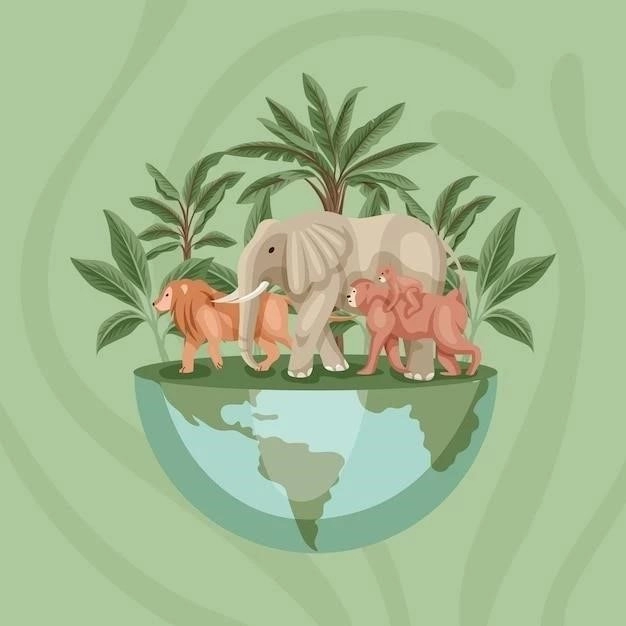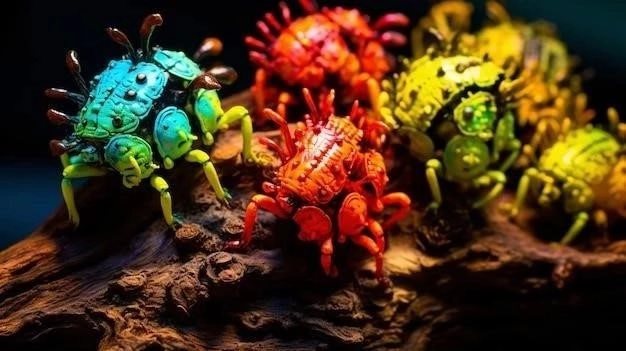As an avid hiker and nature enthusiast, Ive witnessed firsthand the devastating impact of invasive species on animals. I remember hiking through a forest trail, expecting to be greeted by a symphony of bird songs, only to be met with an eerie silence. It was then that I truly understood the gravity of the situation.

What are Invasive Species?
Invasive species are non-native organisms that, when introduced to a new environment, can cause significant harm to the ecosystem, economy, or human health. They often outcompete native species for resources like food, water, and shelter, leading to a decline in native populations.
My Encounter with the Burmese Python
During a trip to the Everglades National Park in Florida, I learned about the devastating impact of the Burmese python. This massive snake, native to Southeast Asia, has become a top predator in the Everglades, decimating populations of native mammals like rabbits, raccoons, and even bobcats. I spoke with park rangers who showed me photos of pythons swallowing whole alligators! It was a stark reminder of the destructive power of invasive species.

The Case of the Zebra Mussel
Back home in the Great Lakes region, Ive seen the impact of the zebra mussel. This small, striped mollusk, native to Eastern Europe, arrived in the Great Lakes via ballast water from ships. They reproduce rapidly, clogging water intake pipes and outcompeting native mussels for food. I volunteered with a local conservation group to help monitor and control their spread. We spent hours scraping mussels off of boats and docks, hoping to slow their devastating impact on the ecosystem.
What Can We Do?
The fight against invasive species is a collective effort. Here are a few things I do to help⁚
- Clean my hiking boots and gear⁚ This prevents the accidental spread of invasive seeds and insects.
- Dont release pets into the wild⁚ Released pets can become invasive and wreak havoc on ecosystems.
- Support local conservation efforts⁚ Many organizations work tirelessly to combat invasive species.
Invasive species pose a significant threat to our planets biodiversity. By understanding their impact and taking action to prevent their spread, we can help protect our native plants and animals for generations to come.
I remember another encounter, this time closer to home. I was kayaking on a lake I frequented as a kid, a place where I used to marvel at the diversity of fish. This time, however, the water seemed strangely murky. A local fisherman, old Mr. Thompson, explained it was the Asian carp, an invasive species known to leap out of the water, sometimes even injuring boaters.
He told me stories of how the lake used to teem with native bass and trout, but now, their numbers were dwindling. He pointed to his almost empty bucket, a sad testament to the carps impact. It broke my heart to see a place I held dear so profoundly affected.
These experiences have made me realize that the fight against invasive species is not just about protecting nature; its about safeguarding our memories, our livelihoods, and our future. I now make a conscious effort to educate others about the issue, sharing my experiences and encouraging them to take action. Whether its volunteering for a local cleanup drive or simply choosing native plants for our gardens, every little bit helps.
Mr. Thompsons stories about the lakes decline stuck with me. I decided to do some research and discovered a local organization dedicated to controlling the Asian carp population. They were organizing a fishing tournament, a fun way to raise awareness and remove some of the invasive fish. I signed up immediately, eager to contribute.
The tournament was a blast! We spent the day out on the water, competing to catch the most carp. It was physically demanding work, hauling in those hefty fish, but there was a sense of camaraderie and shared purpose among the participants. We were all there for the love of the lake and the desire to restore it to its former glory.
At the end of the day, we gathered as the organizers weighed each teams catch. I was amazed by the sheer number of carp we had pulled from the lake. It was a stark visual reminder of the scale of the problem, but also a testament to the impact we could have through collective action.
Although the fight against invasive species is ongoing, that day on the lake filled me with a sense of hope. I realized that even small actions, like participating in a fishing tournament, can make a difference. Its about staying informed, spreading awareness, and working together to protect the places we love. And who knows, maybe one day, the familiar songs of the bass and trout will once again fill the air around that lake.
Inspired by the fishing tournament, I decided to take a more proactive approach in my own backyard. Id heard about the damage invasive plant species can do, choking out native flora and disrupting the delicate balance of the local ecosystem. So, I decided to tackle a patch of English ivy that had been aggressively taking over a section of my fence.
Ill admit, I underestimated the tenacity of this invasive vine. It had woven itself so tightly around the fence, it felt like I was unraveling a stubborn knot. Armed with thick gloves and a pair of garden shears, I spent an entire Saturday morning wrestling with the ivy. My neighbor, Sarah, poked her head over the fence, initially mistaking my grunts of exertion for cries of distress. Once she understood my mission, she chuckled and shared my frustration. She, too, had battled invasive plants in her yard, lamenting the way Japanese honeysuckle seemed to spring up overnight.
After hours of labor, sweat dripping from my brow, I finally managed to free my fence from the ivys clutches. The sense of accomplishment was immense. I piled up the uprooted vines, making sure to dispose of them properly to prevent further spread. Exhausted but satisfied, I stood back to admire my handiwork. The bare fence seemed to stand taller, no longer burdened by the invasive intruder.
That evening, nursing a well-deserved glass of iced tea, I noticed something I hadnt before. A hummingbird, flitting from flower to flower in my now-visible wildflower patch. It dawned on me that by removing the invasive ivy, I had not only reclaimed a piece of my yard but also created space for native species to thrive. It was a small victory, but it fueled my determination to continue learning and doing my part to combat invasive species, one vine, one fish, one action at a time.
Inspired by my ivy-removal victory, I decided to tackle another aspect of invasive species control⁚ responsible consumer choices. Id heard about the problems caused by invasive species in the aquarium trade, so I decided to revamp my own small freshwater tank.
I started by researching the plants and fish I already had, making sure none were considered invasive in my region. Thankfully, they werent, but it was a wake-up call. I realized I had been blissfully unaware of the potential ecological impact of my hobby.
Next, I visited my local aquarium store, determined to make responsible purchases. I struck up a conversation with the owner, a friendly woman named Betty, about my newfound awareness of invasive species. To my surprise, she was incredibly knowledgeable and passionate about the topic. She showed me a special section dedicated to native plants and fish, explaining that they were becoming increasingly popular as people became more aware of the issue.
I left the store that day with a beautiful selection of native aquatic plants – delicate water lilies and vibrant cardinal flower – to replace the generic, potentially problematic ones I’d had before. As I carefully arranged them in my tank, I felt a renewed sense of purpose. My little aquarium, once a potential vector for invasive species, was now a tiny haven for native life, and a constant reminder of the importance of informed choices.
My journey into the world of invasive species didnt stop at my backyard and my fish tank. It sparked a curiosity about the larger ecosystem around me, particularly the nearby forest I often explored. Id heard whispers of invasive insects wreaking havoc on native trees, and I wanted to learn more.
One crisp autumn afternoon, I joined a guided nature walk organized by the local conservation authority. Our guide, a sprightly woman named Eleanor, had been studying forest ecosystems for decades and spoke with a contagious passion. She led us down a winding trail, stopping every so often to point out the subtle signs of invasive insects.
I learned about the emerald ash borer, a tiny beetle with a shiny green exoskeleton, responsible for decimating ash tree populations across the continent. Eleanor showed us the telltale D-shaped holes the borers leave in the bark, and the serpentine tunnels their larvae carve beneath, slowly choking the life out of the tree. She pointed out an ash tree, its once-vibrant canopy now a skeletal shadow of its former self, a stark reminder of the insects destructive power;
Further down the path, we encountered a stand of hemlock trees, their needles tinged an unhealthy yellow. This, Eleanor explained, was the work of the hemlock woolly adelgid, a tiny insect that feeds on the sap of hemlock trees, weakening and eventually killing them. She pointed out the adelgids tiny white egg sacs, resembling miniature cotton balls, clinging to the underside of the branches. They seemed innocuous enough, yet their impact was devastating.
As we walked, Eleanor emphasized the interconnectedness of the forest ecosystem. The loss of ash and hemlock trees, she explained, created a ripple effect, impacting everything from soil composition to wildlife habitat. It was a sobering reminder of the delicate balance of nature and the far-reaching consequences of invasive species.
The walk left a lasting impression. I felt a newfound appreciation for the complexity of the forest and a sense of responsibility to protect it. I realized that combating invasive species wasnt just about removing a few plants or fish; it was about safeguarding entire ecosystems and preserving the delicate web of life that sustains us all.










